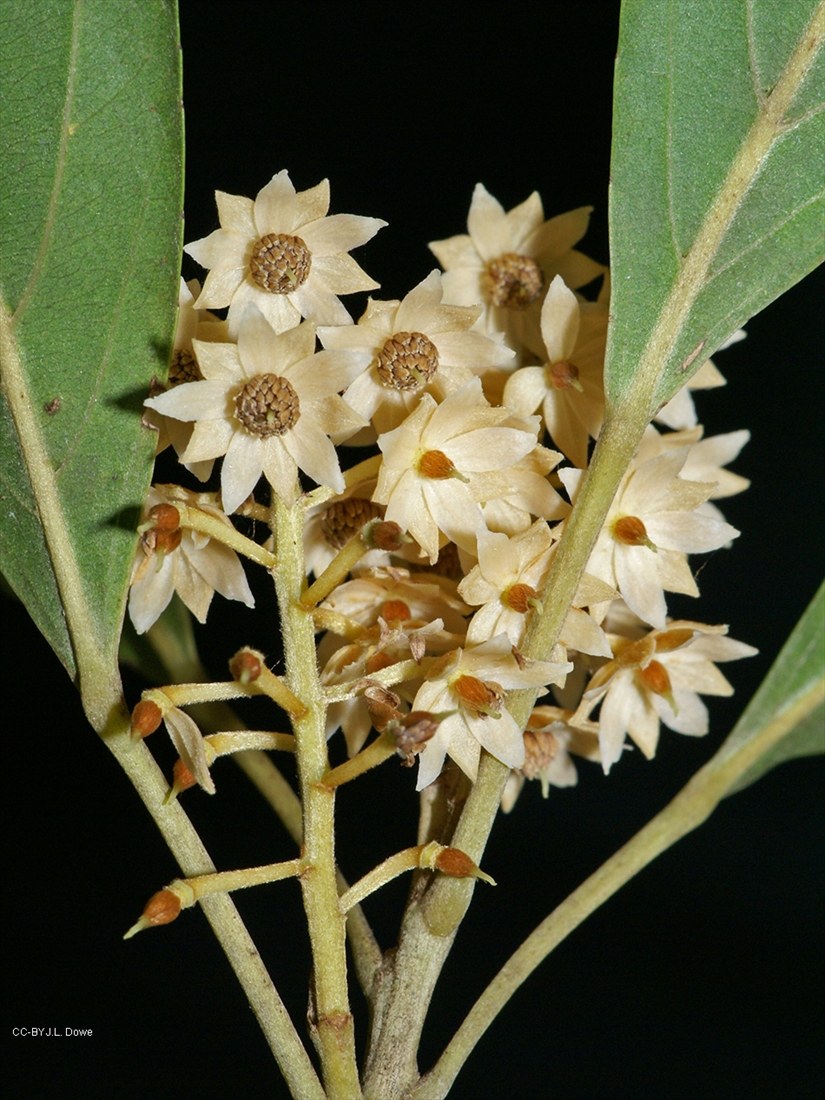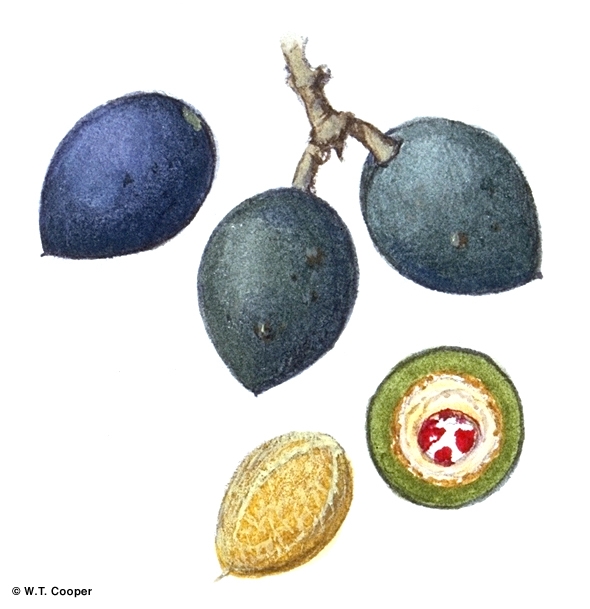Australian Tropical Rainforest Plants - Online edition
Elaeocarpus foveolatus F.Muell.




Mueller, F.J.H. von (1865) Fragmenta Phytographiae Australiae 5: 157. Type: In montibus ad sinum Rockinghams Bay. Dallachy.
White Quandong; Northern Quandong; Quandong, White; Quandong, Northern; Quandong
Bark often dark with the lenticels appearing almost white by contrast. White granular stripes in the outer blaze.
Leaf blades about 4.5-10 x 1.5-3.5 cm. Margin crenate, teeth present all around the margin of the leaf blade, about 15-25 on each side evenly distributed from the base to the apex. About 5-8 main lateral veins on each side of the midrib. Domatia are foveoles. A variable species; leaves variable in shape and structure, difficult to characterize.
First pair of leaves opposite, lanceolate, apex mucronate, margins finely toothed. At the tenth leaf stage: leaves narrowly elliptic, margin crenate but with a small peg-like tooth on each crenation, midrib raised on the upper surface, stipules linear, about 1-3 mm long; new growth pink-red, clothed in short silky hairs. Tap root somewhat swollen and carrot-like (Daucus carota). Seed germination time 284 to 876 days.
Seeds eaten by native rats. Cooper & Cooper (1994).
Stem bark of the species was active against tumor cell cultures. Collins et al. (1990).





